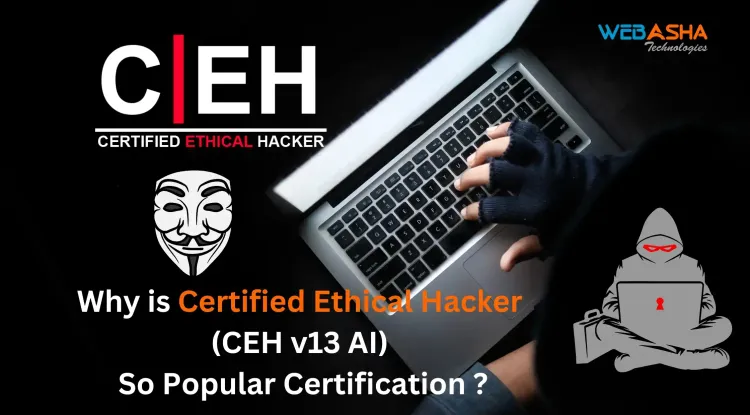Can AI Be Used for Zero-Day Vulnerability Discovery? How Artificial Intelligence is Changing Cybersecurity Threat Detection
Zero-day vulnerabilities pose some of the biggest cybersecurity risks, as they remain unknown to software vendors and security teams until they are exploited. AI is now playing a crucial role in identifying and predicting zero-day vulnerabilities before they can be weaponized by hackers. Using techniques like machine learning, fuzz testing, and AI-powered threat intelligence, AI is helping security researchers scan vast amounts of code, detect anomalies, and predict potential weaknesses. However, AI still has limitations—it lacks contextual awareness and human creativity in exploit development. This blog explores how AI is being used in zero-day vulnerability discovery, its advantages, challenges, and the future of AI-driven cybersecurity.

Table of Contents
- Introduction
- Understanding Zero-Day Vulnerabilities
- How AI is Being Used for Zero-Day Discovery
- Challenges of Using AI for Zero-Day Discovery
- The Future of AI in Zero-Day Discovery
- Conclusion
- FAQ
Introduction
Zero-day vulnerabilities are among the most dangerous security threats in the digital world. These are security flaws that are unknown to software vendors and, therefore, have no existing patch or fix. Cybercriminals exploit zero-day vulnerabilities to launch sophisticated attacks, often with devastating consequences.
Traditionally, zero-day discovery has been the domain of expert ethical hackers and security researchers. However, with the rise of Artificial Intelligence (AI) in cybersecurity, many are now asking: Can AI be used to discover zero-day vulnerabilities?
The answer is yes—but with limitations. AI has the potential to analyze massive amounts of code, detect patterns, and predict potential vulnerabilities faster than humans. However, it still lacks the creativity and intuition of expert security researchers. This blog explores how AI is being used for zero-day vulnerability detection, its benefits, challenges, and future implications.
Understanding Zero-Day Vulnerabilities
What is a Zero-Day Vulnerability?
A zero-day vulnerability is a security flaw in software, hardware, or firmware that is unknown to the vendor or developers. Since there is no fix available, attackers can exploit these vulnerabilities to compromise systems before a patch is developed.
Why Are Zero-Day Vulnerabilities Dangerous?
- No Defense Available – Since the vendor is unaware, there are no patches or updates to fix the issue.
- High Value for Hackers – Zero-day exploits are often sold on the dark web or used in nation-state cyberattacks.
- Difficult to Detect – Traditional security tools may fail to identify zero-day attacks.
How AI is Being Used for Zero-Day Discovery
AI-driven cybersecurity tools are transforming the way we detect, analyze, and predict zero-day vulnerabilities. Here’s how AI contributes to vulnerability discovery:
1. AI for Automated Code Analysis
AI can scan millions of lines of code in open-source and proprietary software to identify potential weak points. Machine learning (ML) models are trained to recognize common security flaws such as buffer overflows, injection attacks, and privilege escalation.
2. AI-Powered Vulnerability Prediction
AI can predict potential zero-day vulnerabilities by analyzing past security flaws, attack patterns, and common software development mistakes. Using historical vulnerability databases, AI can assess code and estimate the likelihood of security flaws.
3. Natural Language Processing (NLP) for Threat Intelligence
AI-powered Natural Language Processing (NLP) tools scan:
- Security forums
- Hacker discussions
- Dark web marketplaces
- Bug bounty platforms
These tools identify early warnings about potential zero-day vulnerabilities before they become widely exploited.
4. Fuzz Testing with AI
Fuzz testing (fuzzing) is a technique where AI automatically inputs random data into software to find vulnerabilities. AI-enhanced fuzz testing:
- Identifies unexpected crashes
- Detects memory corruption issues
- Finds security weaknesses without human intervention
5. AI for Reverse Engineering Malware
AI can analyze malware samples to determine whether zero-day vulnerabilities are being exploited. By identifying patterns in malicious code, AI helps security teams respond faster.
AI vs. Human Researchers: Strengths and Weaknesses
| Aspect | AI for Zero-Day Discovery | Human Researchers |
|---|---|---|
| Speed | Analyzes massive datasets instantly | Time-consuming manual research |
| Scalability | Can scan thousands of applications | Limited by human effort |
| Pattern Recognition | Identifies vulnerabilities based on historical data | Can think creatively beyond patterns |
| False Positives | May generate false alerts requiring human review | More accurate but slower |
| Context Awareness | Lacks deep understanding of business logic flaws | Can assess real-world attack scenarios |
Why Human Hackers Are Still Essential
- AI struggles with business logic vulnerabilities, which require contextual understanding.
- AI lacks creativity and intuition, making it less effective for advanced exploit development.
- Ethical hackers can think like real attackers, using unpredictable tactics to discover zero-days.
Challenges of Using AI for Zero-Day Discovery
1. High False Positives
AI models flag potential vulnerabilities, but many are false positives. Security teams must manually verify AI’s findings.
2. Lack of Contextual Awareness
AI can detect technical flaws, but it may miss logical vulnerabilities that only humans can understand.
3. Ethical Concerns & Dual-Use Risks
While AI helps ethical hackers discover vulnerabilities, it can also be weaponized by cybercriminals for automated exploit development.
4. Need for Continuous Training
AI models must be continuously trained on new attack techniques, making them resource-intensive to maintain.
The Future of AI in Zero-Day Discovery
The use of AI in zero-day vulnerability discovery is still in its early stages, but future advancements could bring:
1. AI-Augmented Bug Bounty Programs
AI will assist bug bounty hunters by automating vulnerability scanning, making zero-day discovery faster and more efficient.
2. AI vs. AI Cybersecurity Battles
As AI improves, we will see AI-driven cybersecurity tools battling against AI-powered cyberattacks in real time.
3. AI-Enhanced Threat Intelligence Platforms
Future threat intelligence platforms will use AI to automatically detect and mitigate zero-day exploits before they spread.
4. Quantum Computing & AI for Cybersecurity
Quantum computing could supercharge AI models, making zero-day detection faster and more accurate.
Conclusion
AI is revolutionizing zero-day vulnerability discovery, offering speed, scalability, and automation to cybersecurity professionals. However, AI alone is not enough—human expertise is still essential for understanding business logic flaws, creative attack techniques, and exploit development.
The best approach is a hybrid model, where AI assists security researchers in identifying potential zero-days while humans validate and analyze AI findings.
As AI technology evolves, organizations must balance its benefits with ethical considerations, ensuring that AI remains a tool for cybersecurity defense rather than cybercriminal exploitation.
In the race between cybersecurity professionals and hackers, AI is both a weapon and a shield—it all depends on how we use it.
FAQs
What is a zero-day vulnerability?
A zero-day vulnerability is a security flaw in software or hardware that is unknown to the vendor, leaving it open for exploitation until a patch is released.
How do hackers exploit zero-day vulnerabilities?
Hackers exploit zero-day vulnerabilities by crafting malicious code or attacks that take advantage of the flaw before it is discovered and patched.
Can AI detect zero-day vulnerabilities?
Yes, AI can analyze large datasets, detect patterns, and predict potential security flaws, making it useful for zero-day vulnerability discovery.
How does AI help in cybersecurity?
AI helps in cybersecurity by automating threat detection, vulnerability scanning, malware analysis, and intrusion detection to improve security defenses.
What AI techniques are used to find vulnerabilities?
AI uses machine learning, deep learning, natural language processing (NLP), and fuzz testing to identify vulnerabilities.
What is AI-powered fuzz testing?
AI fuzz testing is a method where AI automatically inputs random data into software to detect security vulnerabilities and crashes.
Can AI replace human ethical hackers?
No, AI can assist ethical hackers by automating tasks, but it lacks creativity and intuition, making human experts essential for cybersecurity.
What are the advantages of AI in zero-day detection?
AI speeds up vulnerability discovery, processes large amounts of data, reduces manual work, and improves threat intelligence.
Does AI have limitations in cybersecurity?
Yes, AI struggles with contextual awareness, produces false positives, and requires continuous training to remain effective.
Can AI predict future vulnerabilities?
Yes, AI can analyze past vulnerabilities and predict possible future exploits based on historical attack patterns.
How does AI compare to traditional vulnerability scanning?
Traditional scanning follows predefined rules, while AI learns and adapts to detect unknown threats, making it more effective for zero-day discovery.
What is adversarial AI in cybersecurity?
Adversarial AI involves attackers using AI to bypass security defenses, evade detection, and develop sophisticated cyber threats.
How do security teams use AI in penetration testing?
AI automates penetration testing by scanning networks, detecting vulnerabilities, and simulating attacks to improve security posture.
What is AI-driven threat intelligence?
AI-driven threat intelligence collects and analyzes cyber threat data from various sources to predict and prevent potential attacks.
Can AI find vulnerabilities in open-source software?
Yes, AI can scan open-source code repositories to detect security flaws and potential vulnerabilities.
How does AI analyze malware for zero-day detection?
AI uses machine learning to analyze malware patterns, detect anomalies, and uncover previously unknown exploits.
Is AI being used in bug bounty programs?
Yes, AI assists bug bounty hunters by automating vulnerability detection and identifying potential security flaws.
What industries benefit from AI in cybersecurity?
Industries like finance, healthcare, government, and technology benefit from AI-driven cybersecurity solutions.
How does AI handle false positives in vulnerability detection?
AI refines its models over time, but human experts are still needed to validate AI findings and reduce false positives.
Can AI detect insider threats?
Yes, AI analyzes user behavior and detects anomalies that may indicate insider threats or suspicious activities.
Is AI used in cyber warfare?
Yes, AI is increasingly used in cyber warfare for both defense and offense, including threat detection and automated attacks.
What is deep learning in cybersecurity?
Deep learning is an advanced AI technique that analyzes large amounts of cybersecurity data to detect complex threats.
Can AI fix vulnerabilities automatically?
AI can suggest fixes and automate patch deployment, but human intervention is often required for final verification.
How does AI help in ransomware detection?
AI detects ransomware by analyzing unusual file encryption patterns, suspicious network activity, and behavior anomalies.
What role does AI play in SOC (Security Operations Centers)?
AI automates threat detection, reduces response time, and assists security analysts in handling cyber threats more efficiently.
Can AI be used for ethical hacking training?
Yes, AI-powered simulations and cybersecurity training tools help ethical hackers improve their skills.
What is the future of AI in cybersecurity?
AI will continue to evolve, with advancements in automated defense systems, AI-on-AI cyber battles, and quantum computing integration.
Can AI prevent all cyber threats?
No, while AI enhances security, it is not foolproof. A combination of AI and human expertise is essential for effective cybersecurity.
How should organizations integrate AI into their cybersecurity strategy?
Organizations should combine AI-powered security tools with human expertise, continuous monitoring, and ethical guidelines to strengthen cybersecurity defenses.












![Top 10 Ethical Hackers in the World [2025]](https://www.webasha.com/blog/uploads/images/202408/image_100x75_66c2f983c207b.webp)

![[2025] Top 100+ VAPT Interview Questions and Answers](https://www.webasha.com/blog/uploads/images/image_100x75_6512b1e4b64f7.jpg)









